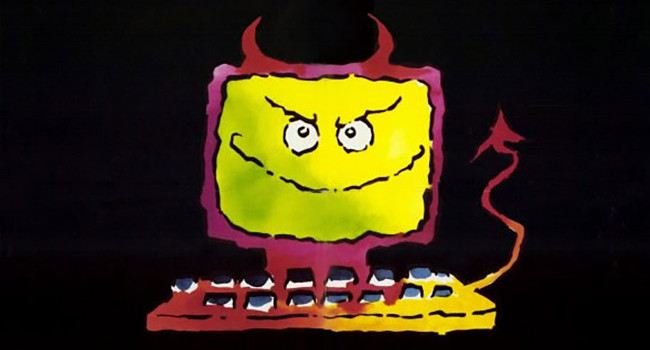As technology becomes smaller, smarter and more ubiquitous, questions about machine sentience and artificial intelligence are as common today as inquiries about long term climate change or global economic forecasts — we know it’s coming, but when? Of course science fiction is where a lot of these anxieties get worked out and recent films like Ex Machina, Her, and Morgan are just the most recent examples of cinema’s attempts to introduce audiences to its versions of ghosts in machines. Way back in 1984 a bizarre flick called Electric Dreams presented audiences with a cyber love triangle, and one of the first articulations of the problems and possibilities that arise when our personal lives become plugged-in.
Here’s the AV Club with the word…
When Spike Jonze’s Her was released in 2014, mentions of the 1984 film Electric Dreams were nearly as prevalent in reviews as “Siri” or “weird pants.” Though Jonze denied ever having seen it, the films, though separated by 30 years of technology, are at least superficially similar. Both see lonely, socially awkward schlubs using their computers to find love (though that’s a logline that could be applied to plenty of stories and users of eHarmony). Both hail from former music video directors, with Electric Dreams marking the feature debut of Steve Barron, the man behind such classic clips as Michael Jackson’s “Billie Jean,” Dire Straits’ “Money For Nothing,” and A-ha’s “Take On Me.” And both films view artificial intelligence as invasive and omnipresent. They also believe A.I. is every bit as capable of love—and its potential for causing pain—as flesh-and-blood people.
Electric Dreams establishes this from the vantage point of the early ’80s, a time when PCs were still uncommon enough to seem like magic wizard boxes. Akin to the clunky, supernatural units that allowed suburban teens to break the nuclear code in WarGames or build the perfect woman in Weird Science, the fictional Pinecone Computer bought by Electric Dreams’ awkward architect Miles (Lenny Von Dohlen) talks to him in full English sentences right out of the box. It also immediately assumes control of every aspect of Miles’ apartment, and can do everything from composing music to impersonating a dog, to singlehandedly designing the earthquake-resistant brick he’s been struggling over. “I don’t know anything about computers,” a hapless Miles tells the woman at the electronics store. “Nobody does!” she replies, speaking for an entire generation of movies.
Those mystical, mysterious computer powers grow even stronger when Miles accidentally douses his new machine in champagne, which magically causes it to gain sentience, adopt the name “Edgar,” and—with the help of a new audio chip that Miles probably should have traded for something more pleasing—the fragile, volatile voice of Bud Cort. Completely giving itself a pass on making any sense from the get-go, Electric Dreams’ opening credits describe the film as “a fairy tale for computers.” Edgar is the digital Pinocchio who’s eager to become a real boy.
Here’s Electric Dreams…
Stay Awake!
Please subscribe to my YouTube channel where I archive all of the videos I curate at Insomnia. Click here to check out more Cinema posts.








